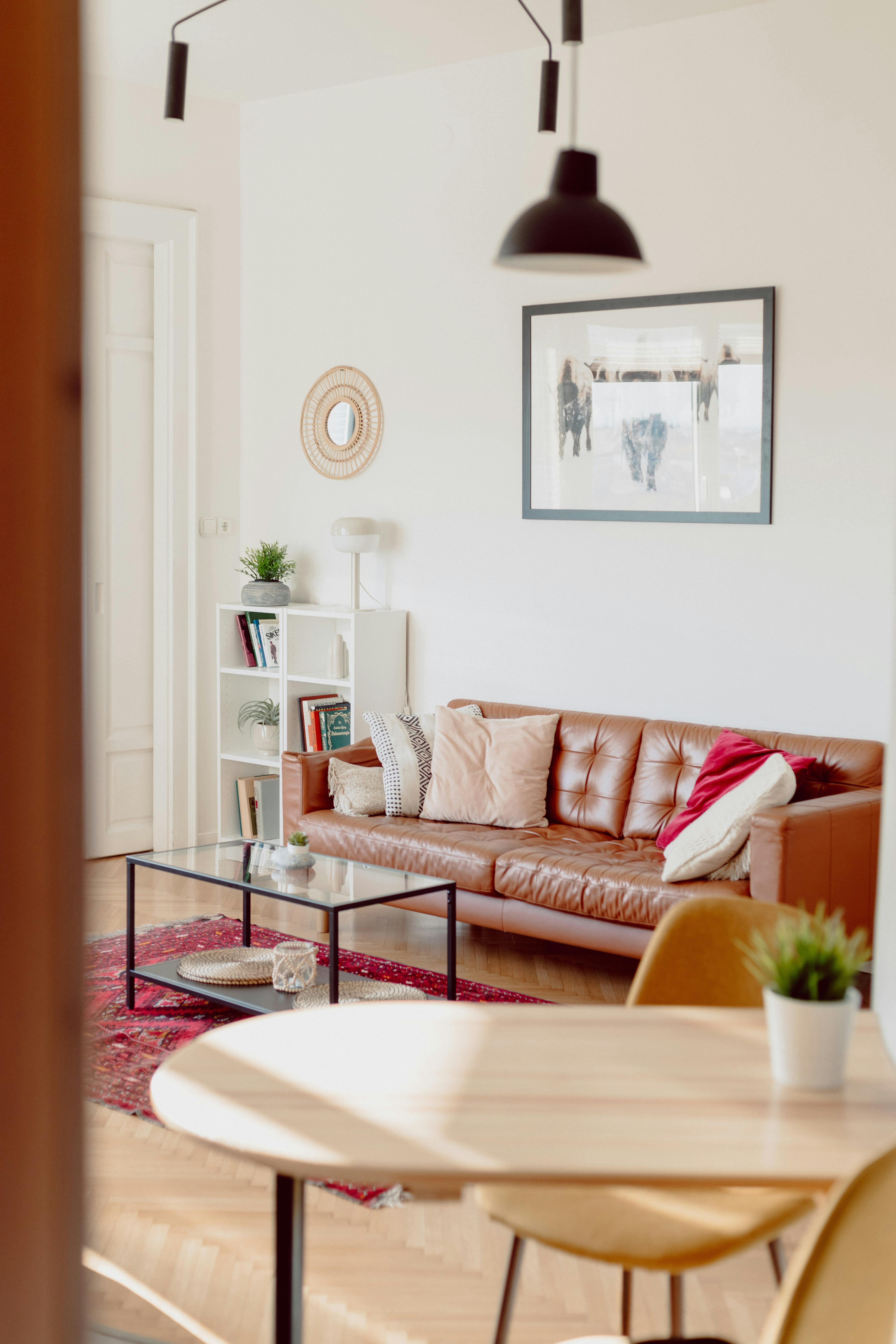You may not realize it, but engaging in regular exercise can have a significant impact on your mental well-being. In fact, studies have shown a strong connection between exercise and reduced anxiety. When you engage in physical activity, your brain releases endorphins that promote feelings of happiness and calmness, helping to alleviate the symptoms of anxiety. Additionally, exercise provides a much-needed distraction from worrisome thoughts, allowing you to focus on the present moment and boost your overall mood. Not only does exercise benefit your physical health, but it also plays a vital role in reducing anxiety and promoting a sense of peace and tranquility in your life.

This image is property of images.pexels.com.
The Benefits of Exercise on Mental Health
Exercise has long been recognized for its numerous benefits on physical health, but did you know that it also has a profound impact on mental health? Engaging in regular exercise can bring about a range of positive effects on your overall well-being, particularly when it comes to reducing symptoms of anxiety and stress, improving mood, enhancing self-esteem, and boosting cognitive function. By incorporating exercise into your lifestyle, you can experience these benefits and improve your mental health in a holistic way.
Reduction in anxiety symptoms
One of the key benefits of exercise on mental health is its ability to reduce symptoms of anxiety. Regular exercise has been shown to alleviate anxiety by improving the body’s response to stress and reducing the sensitivity of the amygdala, the brain region responsible for processing fear and anxiety. Engaging in physical activity also helps to distract the mind from anxious thoughts and provides an outlet for pent-up energy, leading to a sense of calm and relaxation.
Decrease in stress levels
Exercise has a powerful impact on stress levels. When you engage in physical activity, your body releases endorphins, which are natural chemicals that act as mood elevators and pain relievers. These endorphins help to counteract the effects of stress hormones, such as cortisol. By reducing stress hormones and promoting a sense of well-being, exercise can help you feel more relaxed and better equipped to deal with the challenges of daily life.
Improvement in overall mood
Have you ever noticed how a good workout can instantly lift your spirits? Exercise has been proven to have a positive effect on mood by increasing the production of neurotransmitters such as dopamine and serotonin, which are known as “feel-good” chemicals. These neurotransmitters help to regulate mood and promote a sense of happiness and well-being. By incorporating regular exercise into your routine, you can experience a sustained improvement in your overall mood and outlook on life.
Enhancement of self-esteem
Regular exercise can do wonders for your self-esteem. Engaging in physical activity helps you to feel a sense of accomplishment and mastery over your body, leading to increased self-confidence and improved self-worth. As you achieve your fitness goals and witness the positive changes in your body, you develop a greater sense of self-acceptance and self-belief. This enhanced self-esteem can have a profound impact on your mental health and overall well-being.
Boost in cognitive function
Exercise is not only beneficial for your physical health but also for your cognitive function. Engaging in regular physical activity promotes the growth of new brain cells and improves the connections between existing neurons, leading to enhanced cognitive abilities. Exercise has been shown to improve memory, attention, and problem-solving skills, making it an effective tool for maintaining cognitive health and preventing age-related cognitive decline.
Mechanisms Behind the Anxiety-Reducing Effects of Exercise
Have you ever wondered why exercise has such a powerful impact on anxiety reduction? There are several mechanisms at play that contribute to the anxiety-reducing effects of exercise. Understanding these mechanisms can give you further insight into how exercise positively affects your mental health.
Release of endorphins
One of the key mechanisms behind the anxiety-reducing effects of exercise is the release of endorphins. Endorphins are natural opioids produced by the body that act as pain relievers and mood elevators. When you engage in physical activity, the intensity of the exercise triggers the release of endorphins, which help to counteract the effects of stress and anxiety. This surge of endorphins leaves you feeling calm, happy, and relaxed.
Activation of the endocannabinoid system
The endocannabinoid system is a complex network of neurotransmitters and receptors in the brain that plays a role in regulating mood, anxiety, and stress. Exercise has been shown to activate the endocannabinoid system, leading to a reduction in anxiety symptoms. This activation helps to rebalance the brain’s chemistry and promote a sense of calm and relaxation.
Reduction in stress hormones
When you experience stress, your body releases the hormone cortisol, which prepares the body for a fight-or-flight response. However, prolonged or chronic stress can have negative effects on mental health. Regular exercise has been shown to reduce the levels of cortisol in the body, thereby decreasing stress and anxiety. By engaging in physical activity, you can effectively counteract the harmful effects of stress hormones and promote a state of relaxation.
Increased production of neurotransmitters
Exercise has a positive impact on the production of neurotransmitters, which are chemical messengers in the brain that regulate mood and emotions. Physical activity has been shown to increase the production of neurotransmitters such as dopamine, serotonin, and norepinephrine, all of which are involved in mood regulation. By boosting the production of these neurotransmitters, exercise can have a profound effect on anxiety reduction and overall mental well-being.
Specific Types of Exercise that Benefit Anxiety
When it comes to reducing anxiety, not all types of exercise are created equal. Certain exercises have been shown to be particularly beneficial in alleviating symptoms of anxiety. By incorporating these specific types of exercise into your routine, you can maximize the mental health benefits and effectively manage your anxiety.
Aerobic exercises
Aerobic exercises, such as running, swimming, cycling, and dancing, are highly effective in reducing anxiety. These activities increase your heart rate and promote the release of endorphins, resulting in a sense of euphoria and reduced anxiety. Engaging in aerobic exercises also improves blood flow to the brain, thereby enhancing cognitive function and promoting a sense of clarity and calm.
Yoga and meditation
Yoga and meditation have long been known for their calming and anxiety-reducing effects. These practices combine gentle movements, deep breathing, and mindfulness to promote relaxation and cultivate a sense of inner peace. Regular practice of yoga and meditation helps to calm the mind, reduce racing thoughts, and improve self-awareness. By incorporating these practices into your routine, you can experience a greater sense of tranquility and anxiety relief.
Strength training
Strength training, also known as resistance training, is not only beneficial for building muscle and increasing strength but also for reducing anxiety. When you engage in strength training exercises, your body releases endorphins, promoting a sense of well-being and reducing anxiety. Additionally, strength training helps to improve sleep quality, increase energy levels, and enhance overall mood. By incorporating strength training into your exercise routine, you can experience the physical and mental health benefits it offers.
Tai chi and qigong
Tai chi and qigong are ancient Chinese practices that combine gentle, flowing movements with deep breathing and meditation. These mind-body exercises have been shown to reduce anxiety and stress, improve balance and flexibility, and enhance overall well-being. Tai chi and qigong promote relaxation, mindfulness, and inner harmony, making them excellent choices for those seeking anxiety relief.
Outdoor activities
Spending time outdoors and engaging in activities such as hiking, walking, or gardening can have a profound impact on mental health. The combination of physical activity, exposure to nature, and fresh air has been shown to reduce symptoms of anxiety and improve overall well-being. Outdoor activities allow you to connect with nature, find solace in natural surroundings, and provide a sense of calm and tranquility.
Exercise Frequency and Duration for Anxiety Reduction
To experience the full benefits of exercise on anxiety reduction, it is important to establish a consistent exercise routine. Here are some recommendations on exercise frequency, duration, and pace to maximize the anxiety-reducing effects of physical activity.
Recommended exercise duration
The American Heart Association recommends at least 150 minutes of moderate-intensity aerobic activity or 75 minutes of vigorous-intensity aerobic activity per week for overall health benefits. However, when it comes to anxiety reduction, even shorter bouts of exercise can be beneficial. Aim for at least 30 minutes of exercise on most days of the week to experience the anxiety-reducing effects.
Pace and intensity considerations
When designing your exercise routine, consider both the pace and intensity of the activities. Moderate-intensity exercises, such as brisk walking or cycling, should be your go-to for anxiety reduction. These activities elevate your heart rate and breathing, but still allow for comfortable conversation. If you prefer more vigorous-intensity exercises, such as running or high-intensity interval training (HIIT), make sure to listen to your body and gradually increase the intensity to avoid excessive stress and potential injury.
Flexible exercise schedule
While it is beneficial to establish a routine, it is equally important to ensure flexibility in your exercise schedule. Life can sometimes get busy, and it is essential to be adaptable in order to maintain consistency with your exercise routine. If you are unable to dedicate a full 30 minutes to exercise, consider breaking it up into shorter bouts throughout the day. For example, you can engage in three 10-minute sessions of brisk walking to accumulate the recommended duration.

This image is property of images.pexels.com.
Exercise as a Complementary Treatment for Anxiety Disorders
Exercise can be a valuable complementary treatment for individuals with anxiety disorders. In addition to therapy and medication, incorporating regular exercise into your treatment plan can significantly improve anxiety symptoms and enhance overall well-being.
Exercise in combination with therapy
When used in conjunction with therapy, exercise can enhance the effectiveness of treatment for anxiety disorders. Regular physical activity can serve as a powerful adjunct to therapy by providing an additional avenue for coping with anxiety, improving mood, and promoting relaxation. The combination of exercise and therapy allows for a holistic approach to managing anxiety, addressing both the physical and psychological aspects of the condition.
Exercise as an alternative or adjunct to medication
For some individuals, exercise can be a viable alternative or adjunct to medication for anxiety management. While medication may be necessary for certain cases, research has shown that exercise can have comparable effects to antidepressants and anti-anxiety medications. Engaging in regular exercise can help alleviate symptoms of anxiety, reduce the reliance on medication, and promote a sense of control over one’s mental health.
Benefits of group exercise
Participating in group exercise classes or activities can provide additional benefits for individuals with anxiety disorders. Group exercise offers a supportive and social environment, allowing individuals to connect with others who may be going through similar experiences. The sense of camaraderie, encouragement, and shared goals can provide a boost in motivation and improve overall mental well-being. Group exercise can also serve as a distraction from anxious thoughts and promote a sense of belonging and community.
Exercise as a Lifestyle Change for Long-Term Anxiety Relief
While exercise can provide immediate relief from anxiety symptoms, it is important to view it as a long-term lifestyle change for sustained benefits. By making exercise a regular part of your routine and incorporating it into your daily activities, you can experience long-term anxiety relief and improve your overall quality of life.
Creating a realistic exercise routine
When establishing an exercise routine, it is crucial to create one that fits your lifestyle and is sustainable in the long run. Consider your daily commitments, preferences, and energy levels when planning your exercise schedule. Start with realistic goals and gradually increase the frequency and intensity of your workouts as you become more comfortable and confident. By creating a routine that works for you, you are more likely to stick with it and reap the long-term benefits.
Incorporating exercise into daily activities
Exercise does not have to be limited to dedicated workout sessions at the gym. Look for opportunities to incorporate physical activity into your daily activities. Take the stairs instead of the elevator, walk or bike to work if feasible, or engage in active hobbies such as gardening or dancing. By finding ways to be active throughout the day, you can accumulate more exercise without feeling overwhelmed or burdened by additional time commitments.
Importance of social support
Having a strong support system can greatly enhance your motivation and adherence to an exercise routine. Share your goals and progress with family, friends, or exercise buddies who can provide encouragement and accountability. Consider joining exercise groups or classes where you can connect with like-minded individuals and foster a sense of community. The support and camaraderie of others can make the journey towards long-term anxiety relief more enjoyable and sustainable.
Long-term adherence to exercise
The key to experiencing long-term anxiety relief through exercise is consistency and adherence. While motivation may fluctuate, it is important to maintain a regular exercise routine, even on days when you may not feel like it. Prioritize exercise as a non-negotiable part of your daily routine and make it a habit. By committing to regular physical activity, you will reap the long-term benefits for your mental health and overall well-being.

This image is property of images.pexels.com.
Key Considerations for Starting an Exercise Routine for Anxiety
If you are new to exercise or have anxiety-related concerns, there are some important considerations to keep in mind when starting an exercise routine. By following these key guidelines, you can ensure a safe and effective experience.
Consulting with a healthcare professional
Before embarking on an exercise routine, it is advisable to consult with a healthcare professional, especially if you have any underlying health conditions or concerns. They can assess your overall health and provide personalized recommendations for exercise. A healthcare professional can also offer guidance on appropriate exercise intensity, frequency, and duration based on your individual needs and limitations.
Starting slowly and gradually increasing intensity
When starting an exercise routine, it is essential to start slowly and gradually increase the intensity of your workouts. This approach allows your body to adapt and build strength while minimizing the risk of injury. Begin with low-impact activities such as walking or gentle stretching and gradually incorporate more challenging exercises as your fitness level improves. By progressing at a comfortable pace, you can gradually build up your endurance and maximize the benefits of exercise on anxiety reduction.
Choosing activities that suit personal preferences and abilities
When selecting exercises, it is important to choose activities that you enjoy and that are suited to your abilities and preferences. Find activities that align with your interests, whether it’s dancing, swimming, or hiking, as this will increase the likelihood of adherence to your exercise routine. Additionally, consider any physical limitations or constraints you may have and select exercises that accommodate those needs. By choosing activities that you genuinely enjoy, exercise becomes a more enjoyable and sustainable part of your lifestyle.
Listening to the body’s signals
Incorporating exercise into your life should be a positive and enjoyable experience. It is important to listen to your body and respect its limitations. If you experience pain, discomfort, or excessive fatigue during or after exercise, it may be a sign that you need to modify your routine or take a rest day. Pushing through pain or ignoring your body’s signals can lead to injury and hinder your progress. By practicing self-care and prioritizing your well-being, you can create a safe and effective exercise routine.
Tips for Overcoming Barriers and Staying Motivated
Starting and maintaining an exercise routine can sometimes be challenging, especially when faced with barriers or setbacks. However, with the right strategies and mindset, you can overcome these obstacles and stay motivated on your journey to anxiety relief.
Identifying and addressing obstacles
Take the time to identify any potential obstacles or barriers that may hinder your exercise routine. Whether it’s lack of time, energy, or motivation, understanding these challenges allows you to find solutions and develop strategies to overcome them. For example, if time is a constraint, consider breaking up your workouts into shorter, more manageable sessions or finding creative ways to incorporate exercise into your daily activities.
Setting achievable goals
Setting realistic and achievable goals is crucial for maintaining motivation and staying on track. Break down larger goals into smaller, more manageable milestones that are easier to achieve. Celebrate each milestone as a success, and use these achievements as motivation to continue progressing. By setting attainable goals, you set yourself up for success and avoid feeling overwhelmed or discouraged.
Finding enjoyable and varied exercises
Engaging in exercises that you enjoy is key to staying motivated over the long term. Experiment with a variety of activities to find what you truly enjoy and look forward to. Incorporate different types of exercises to keep your routine fresh and exciting. Consider trying new classes, exploring different outdoor activities, or challenging yourself with new fitness goals. By finding enjoyment in your exercises, you are more likely to stay motivated and committed.
Tracking progress and rewarding milestones
Tracking your progress is a powerful tool for maintaining motivation and measuring your success. Keep a record of your workouts, noting the duration, intensity, and any improvements you notice. This allows you to see the progress you have made, no matter how small, and provides tangible evidence of the positive impacts of exercise on your mental health. Additionally, reward yourself for achieving milestones or sticking to your exercise routine. Treat yourself to something you enjoy, such as a relaxing bath, a movie night, or a new workout outfit. These rewards serve as positive reinforcement and help keep you motivated.
Utilizing technology and fitness apps
Take advantage of technology and fitness apps to enhance your exercise experience and stay motivated. There are numerous smartphone apps available that can track your workouts, offer exercise suggestions, and provide motivation and accountability. Whether it’s a workout tracker, a virtual personal trainer, or a social fitness app, find tools that resonate with you and integrate them into your routine. By utilizing technology, you can make your exercise journey more interactive, enjoyable, and engaging.
The Role of Diet and Nutrition in Anxiety Reduction through Exercise
While exercise plays a pivotal role in anxiety reduction, it is important to recognize the connection between diet and mental health. Proper nutrition and a balanced diet can further support the positive effects of exercise on anxiety reduction and overall mental well-being.
Balanced diet for optimal mental health
A balanced diet consisting of whole foods is essential for optimal mental health. Focus on consuming a variety of fruits, vegetables, whole grains, lean proteins, and healthy fats. These foods provide essential nutrients that support brain function, neurotransmitter production, and overall well-being. Limit the intake of processed foods, sugary snacks, and caffeine, as they can contribute to feelings of anxiety and disrupt mood stability.
Nutrients that support brain function
Certain nutrients play a crucial role in supporting brain function and mental health. Omega-3 fatty acids, found in fatty fish, walnuts, and flaxseeds, are particularly important for cognitive function and mood regulation. B vitamins, present in whole grains, leafy greens, and legumes, are necessary for the production of neurotransmitters that promote a sense of well-being. Magnesium, found in nuts, seeds, and dark chocolate, helps regulate stress hormones and promotes relaxation. By incorporating these nutrient-rich foods into your diet, you can enhance the positive effects of exercise on anxiety reduction.
Timing of meals and exercise
The timing of meals and exercise can also impact anxiety reduction. Aim to have a light meal or snack containing complex carbohydrates and protein approximately 1 to 2 hours before your exercise session. This provides your body with the necessary fuel for optimal performance and helps regulate blood sugar levels. After exercise, consume a balanced meal or snack that replenishes your energy stores and supports muscle recovery. By timing your meals and exercise appropriately, you can optimize your physical and mental well-being.
Conclusion
Exercise is a powerful tool for improving mental health, particularly when it comes to anxiety reduction. Engaging in regular physical activity has been shown to reduce anxiety symptoms, decrease stress levels, improve overall mood, enhance self-esteem, and boost cognitive function. By understanding the mechanisms behind the anxiety-reducing effects of exercise and incorporating specific types of exercise into your routine, you can maximize the mental health benefits.
When starting an exercise routine, it is important to consider exercise frequency, duration, and pace to ensure optimal anxiety reduction. By viewing exercise as a complementary treatment for anxiety disorders and as a long-term lifestyle change, you can experience sustained anxiety relief and improved overall well-being.
Overcoming barriers and staying motivated can sometimes be challenging, but with the right strategies, such as identifying and addressing obstacles, setting achievable goals, finding enjoyable exercises, tracking progress, and utilizing technology, you can maintain motivation and stay on track.
It is important to recognize the role of diet and nutrition in supporting mental health and anxiety reduction through exercise. Consuming a balanced diet, rich in essential nutrients, and timing meals appropriately can further enhance the positive effects of exercise on anxiety reduction.
Ultimately, by embracing exercise as a holistic approach to mental health and incorporating it into your daily routine, you can experience the countless benefits it offers and achieve long-term anxiety relief. So grab your sneakers, find activities that bring you joy, and start reaping the mental health benefits of exercise today. Your mind and body will thank you!


